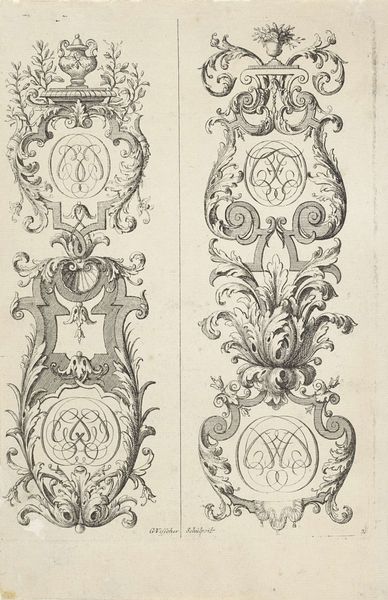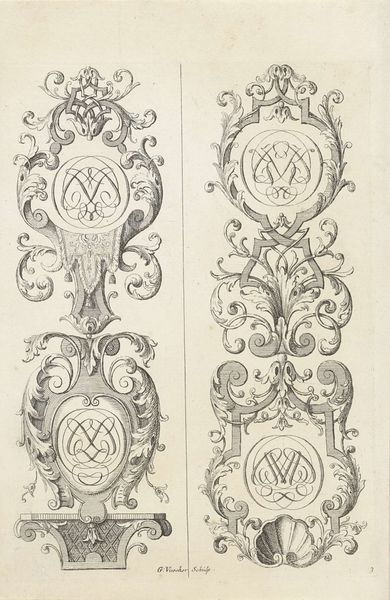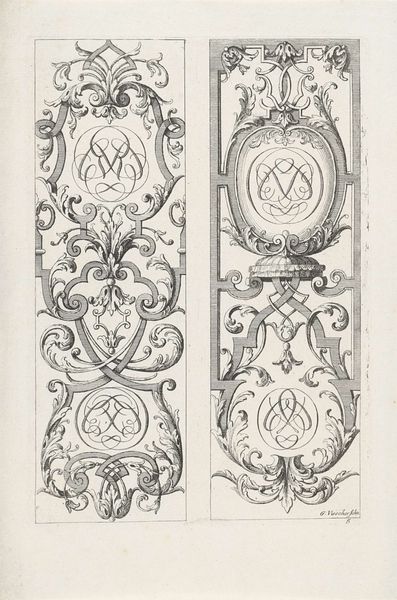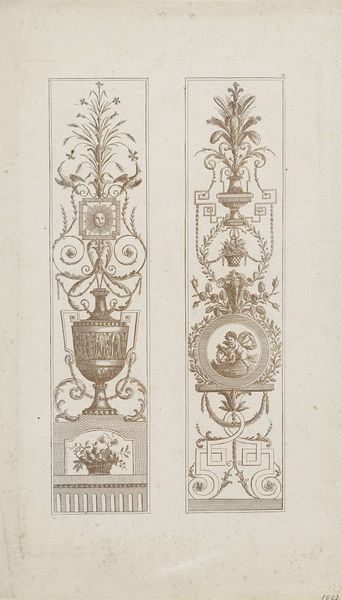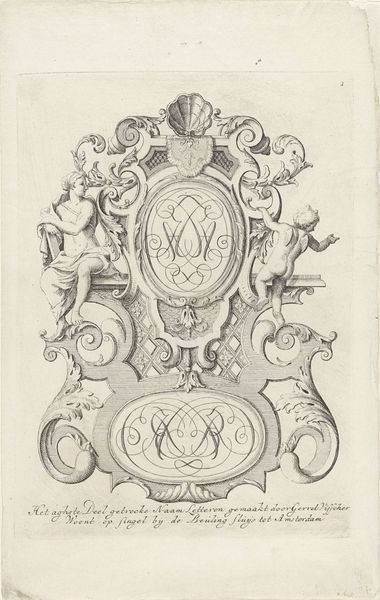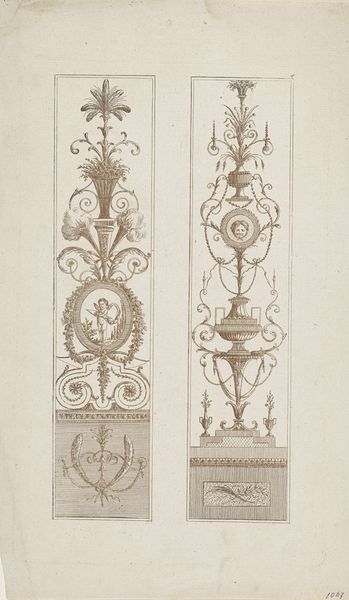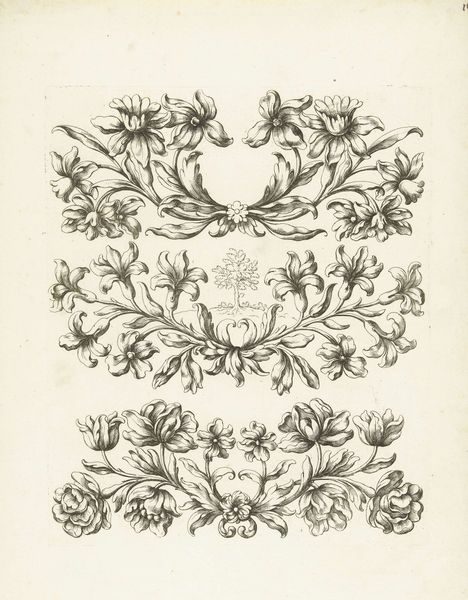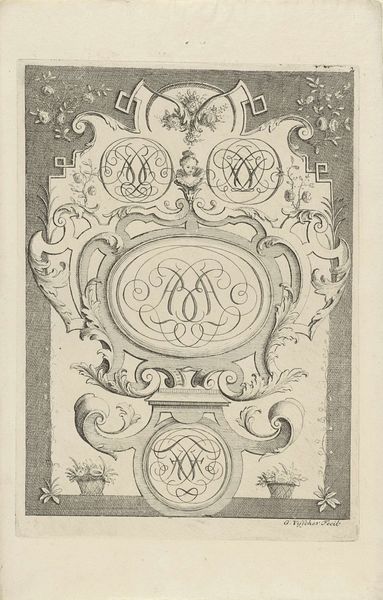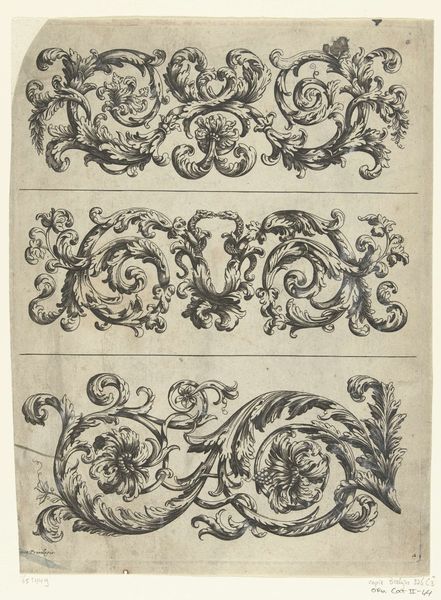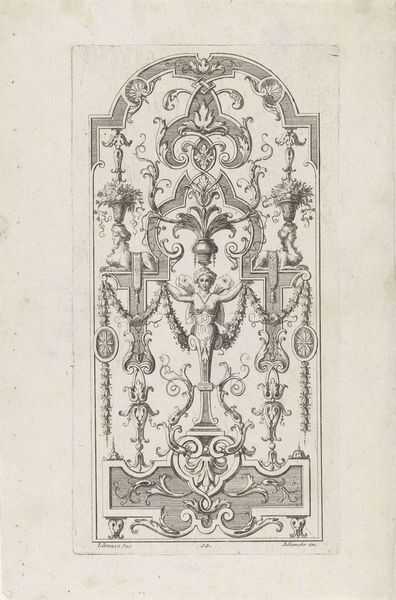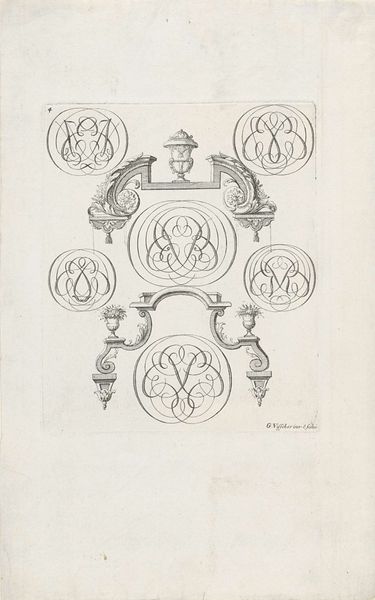
graphic-art, engraving
#
graphic-art
#
baroque
#
form
#
geometric
#
line
#
decorative-art
#
engraving
Dimensions: height 223 mm, width 165 mm
Copyright: Rijks Museum: Open Domain
Curator: Ah, these ornamental designs evoke such a sense of swirling opulence. They almost vibrate with the energy of the late Baroque. Editor: They feel restrained, in a way, don't they? Black and white, meticulously etched...they lack the riotous color I associate with that era. Still, you're right, there's a decadent, swirling essence about them. What are we looking at, exactly? Curator: This is an engraving entitled "Two Vertical Ornaments of Leaf Tendrils and Monograms" made sometime between 1690 and 1710 by Gerrit Visscher. It's a striking example of the decorative arts, leaning heavily into geometric and linear patterns. Editor: The monograms especially grab me. Encrypted stories... a language only a few initiated ones would know! Those elaborate letterforms speak volumes about identity, legacy, and the power of display. You see that head, almost hidden in the foliage on the left? Very secretive, no? Curator: Absolutely. Notice how the foliage itself is stylized. Each leaf, each curve is carefully considered, not quite naturalistic. Visscher manipulates natural forms into deliberate visual rhythms. What do you see in that tension, then, the blending of naturalism with abstraction? Editor: It speaks to a yearning for order, but also an embrace of nature's unpredictable beauty. Perhaps, to make a world, where everything beautiful would still bow down to geometry! This is not just decoration; it is philosophy written in flowing lines. Curator: It's interesting, isn't it? Because these designs probably ended up embellishing something entirely secular, like a piece of furniture or perhaps the binding of an important book. Yet that careful symbolism would subtly elevate its status. It would mark it with the indelible stamp of value. Editor: Almost as if they want to claim power from the heavens themselves, imbuing every object, even the most banal ones with sacred echoes... a secret language permeating mundane objects, turning them into talismans of status. And there is a certain pleasure for the viewer of seeing a name they know worked carefully into the ornamentation, do you agree? Curator: I completely agree. These pieces reflect a specific time, but they speak to a perennial human desire to inscribe meaning onto the world. We should really spend more time decoding how this was actually done. Editor: A fascinating study that speaks across time, don't you think? A good end, for me, to contemplate all of the visual history swirling in a space between nature, philosophy and design!
Comments
No comments
Be the first to comment and join the conversation on the ultimate creative platform.

